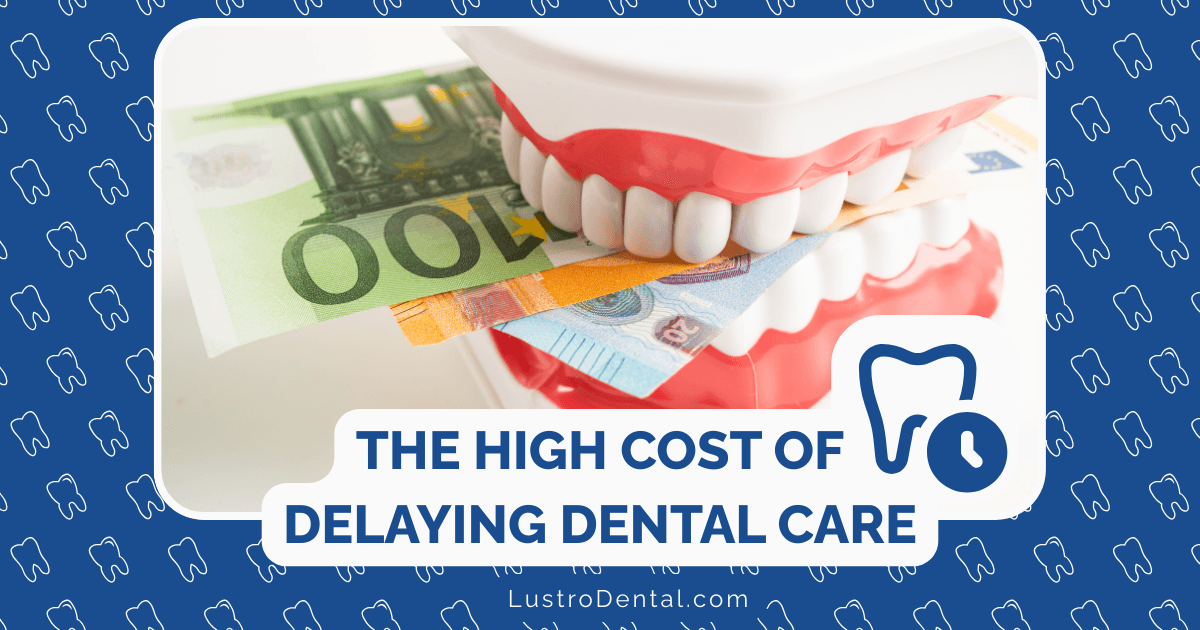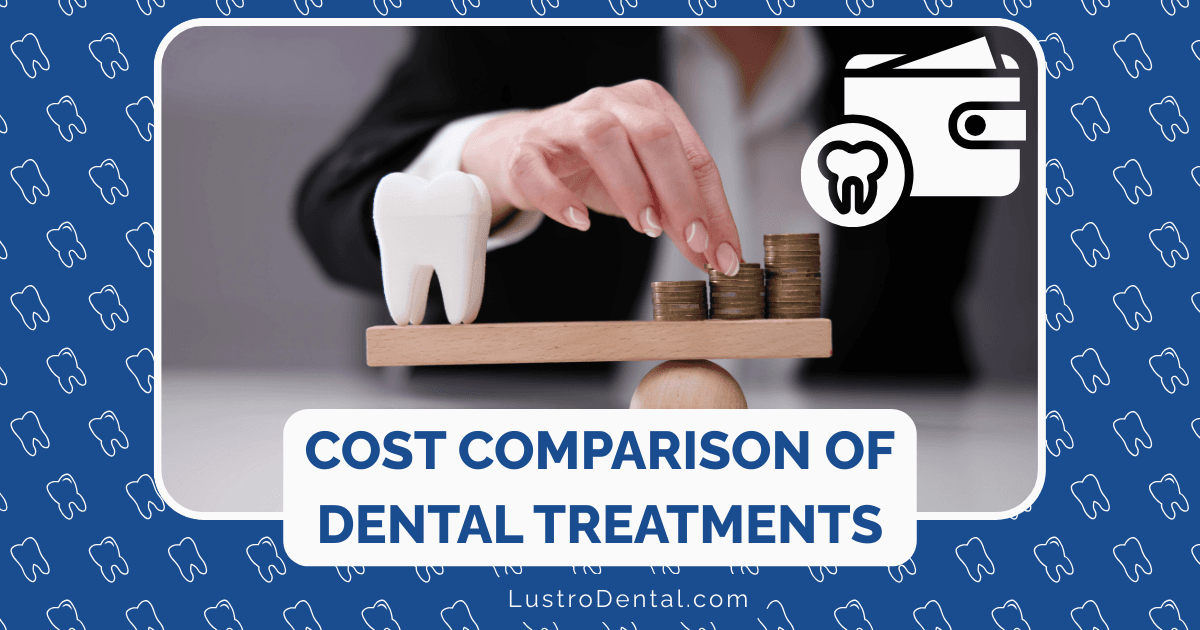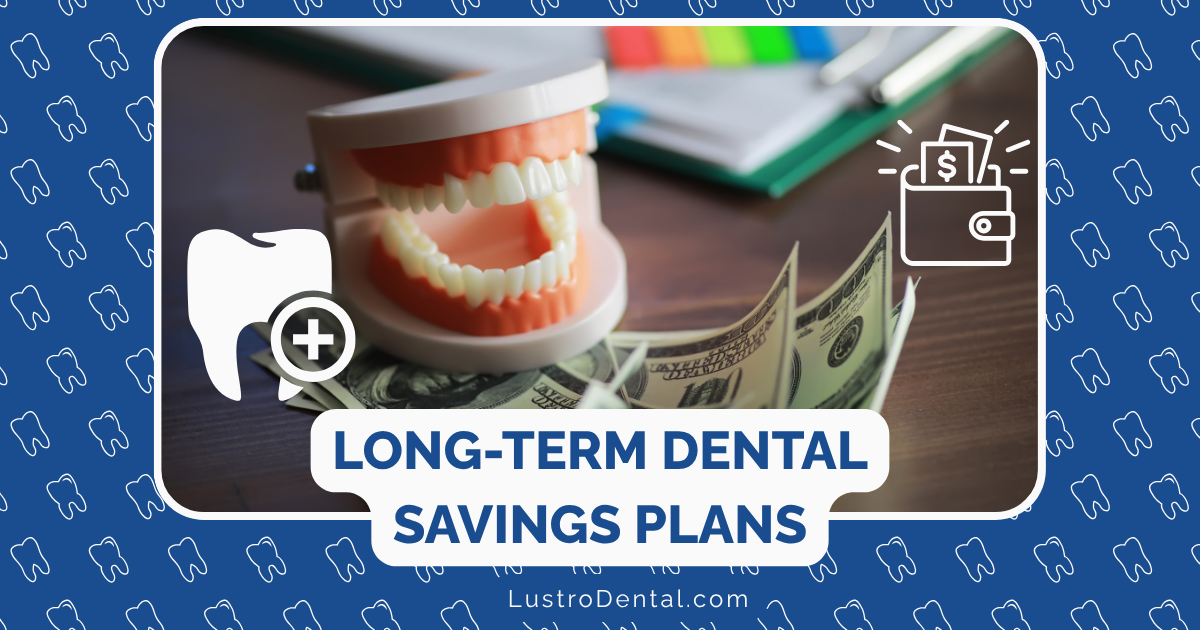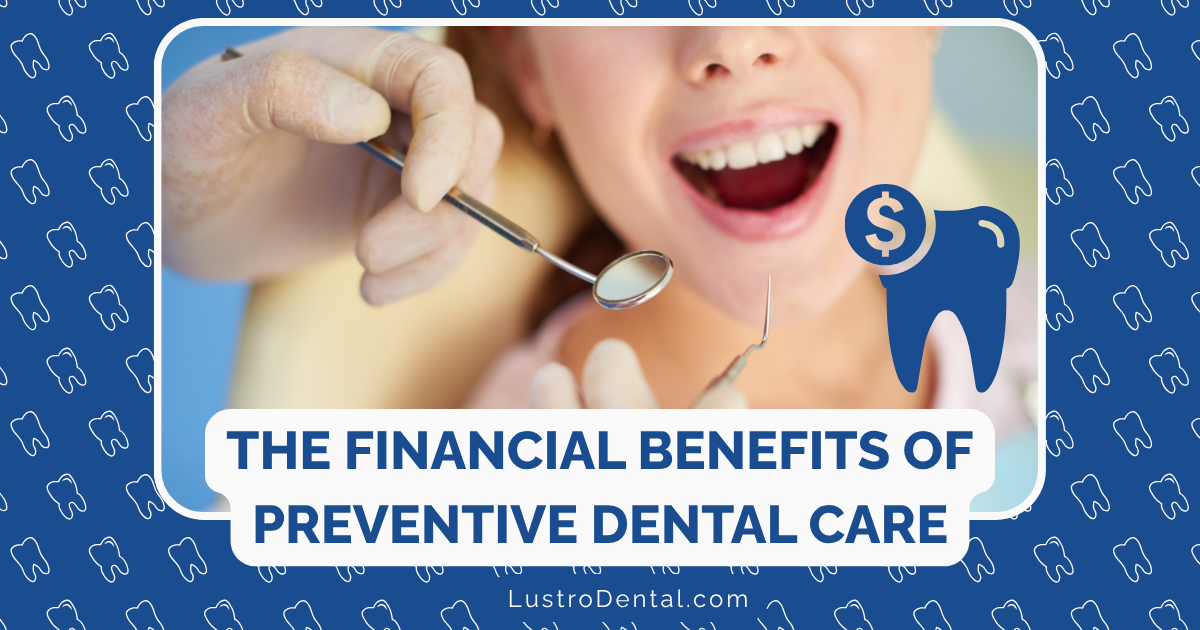Combining Savings Plans with Limited Insurance for Maximum Coverage
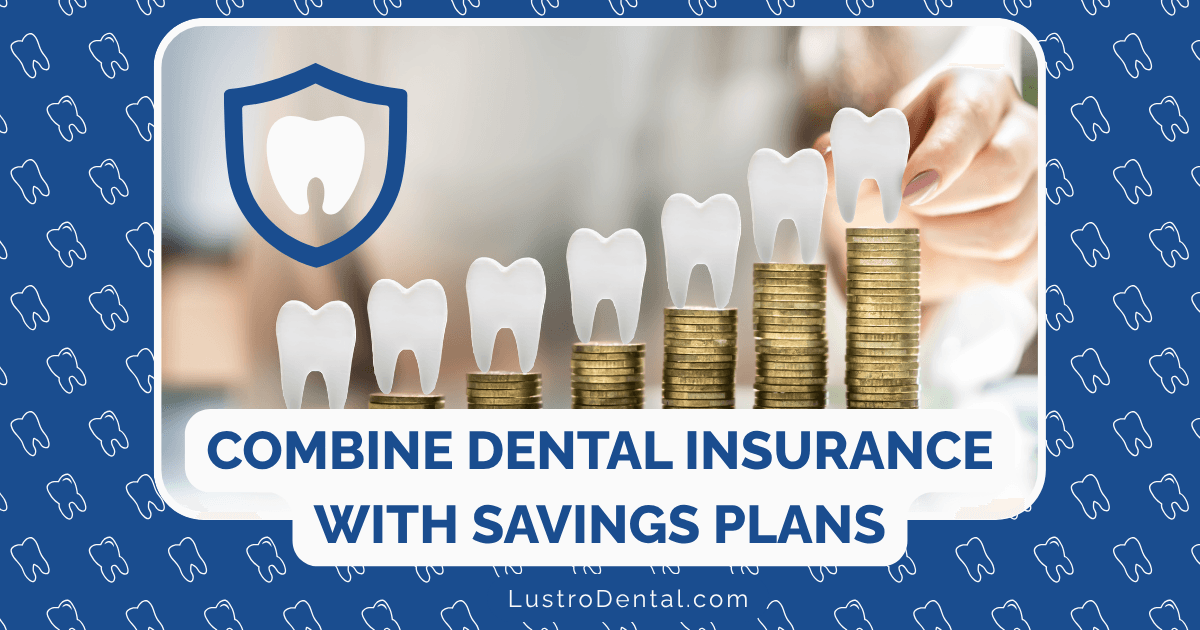
Let’s face it—dental insurance alone rarely covers everything you need. With typical annual maximums stuck at $1,000-$1,500 (an amount that hasn’t substantially changed since the 1970s), even those with insurance often find themselves paying significant out-of-pocket costs for major dental work.
What if you could strategically combine dental insurance with savings plans to plug these coverage gaps? According to the American Dental Association, nearly 40% of dental costs in America are paid out-of-pocket. But with the right combination of coverage options, you can dramatically reduce that percentage.
The Coverage Gap Problem
Before diving into solutions, let’s understand the problem. Traditional dental insurance typically has:
- Annual maximums of $1,000-$1,500
- Coverage percentages that decrease as procedure complexity increases (100-80-50 structure)
- Waiting periods for major procedures (6-12 months)
- Exclusions for cosmetic procedures and sometimes implants
- Pre-existing condition limitations
Meanwhile, dental savings plans (also called dental discount plans) offer:
- No annual maximums
- Immediate discounts (no waiting periods)
- Discounts on procedures not covered by insurance
- No exclusions for pre-existing conditions
- Lower upfront costs than comprehensive insurance
The strategic combination of both can create a more comprehensive coverage approach that neither option provides alone.
Can You Actually Use Both Together?
This is where confusion often sets in. According to DentalPlans.com, you cannot apply both insurance benefits and discount plan savings to the same procedure at the same time. In other words, you can’t double-dip on the same service.
However, you can absolutely use both types of plans strategically throughout the year for different procedures or after you’ve exhausted certain benefits. This distinction is crucial.
Strategic Combination Scenarios
Here are the most effective ways to combine dental insurance with savings plans:
Scenario 1: The Annual Maximum Strategy
How it works:
- Use your dental insurance for covered procedures until you reach your annual maximum
- Once your maximum is exhausted, switch to your savings plan for additional procedures
Example: John has a $1,500 annual maximum on his dental insurance. He needs:
- Two cleanings ($200 each)
- Four fillings ($200 each)
- One crown ($1,200)
Total cost: $2,600
With insurance alone, he’d pay:
- $0 for cleanings (100% covered)
- $160 for fillings (80% covered = $640, consuming $840 of his maximum)
- $330 out-of-pocket for the crown (insurance covers $660 of the $1,200, exhausting his remaining maximum)
Total out-of-pocket: $490
With the combination approach:
- Use insurance for cleanings and fillings as above
- After exhausting the $1,500 maximum, use the savings plan for the crown, getting a 40% discount
- Crown cost with savings plan: $720 instead of $1,200
Total out-of-pocket: $880 vs. $1,100 if he paid the remaining crown cost without a savings plan
When this works best: When you anticipate exceeding your annual maximum
Scenario 2: The Waiting Period Workaround
How it works:
- Use your savings plan for immediate needs during insurance waiting periods
- Switch to insurance once waiting periods expire
Example: Sarah just enrolled in dental insurance but has a 12-month waiting period for major procedures. She needs a root canal and crown immediately.
With insurance alone:
- She must either wait 12 months or pay 100% out-of-pocket now
With the combination approach:
- Use the savings plan immediately for the root canal and crown, saving 30-50%
- Use insurance for routine care now and major procedures after the waiting period expires
When this works best: When you need immediate major dental work but have insurance waiting periods
Scenario 3: The Excluded Services Strategy
How it works:
- Use insurance for covered services
- Use savings plan for excluded services
Example: Michael wants cosmetic veneers and also needs a crown. His insurance excludes cosmetic procedures but covers 50% of the crown.
With insurance alone:
- 50% coverage on the crown
- 0% coverage on veneers
With the combination approach:
- Use insurance for the crown
- Use savings plan for veneers, getting a 20% discount
When this works best: When you want procedures that aren’t covered by your insurance (cosmetic work, certain specialists, implants)
Scenario 4: The Network Limitation Bypass
How it works:
- Use insurance for in-network providers
- Use savings plan for preferred out-of-network providers
Example: Jennifer has insurance but her preferred specialist is out-of-network, resulting in significantly reduced benefits.
With insurance alone:
- Reduced coverage at her preferred specialist
- Full coverage only if she switches to an in-network doctor she doesn’t prefer
With the combination approach:
- Use insurance for in-network general dentistry
- Use savings plan at her preferred specialist
When this works best: When you want to see specific providers who aren’t in your insurance network
Cost-Benefit Analysis: Is Combining Worth It?
The financial equation is straightforward:
Combination approach makes sense when: Annual insurance premium + Annual savings plan fee < Out-of-pocket costs saved
According to Cigna, a typical individual dental insurance premium ranges from $15-$50 monthly ($180-$600 annually), while dental savings plans typically cost $80-$200 annually.
Let’s run the numbers for a typical scenario:
Assumptions:
- Basic dental insurance: $350 annually with $1,500 maximum
- Dental savings plan: $150 annually
- Total cost: $500 annually for both
For this combination to make financial sense, you need to save more than $500 in out-of-pocket costs compared to having insurance alone.
This typically occurs when:
- You need more than $3,000 in dental work annually
- You need immediate care during waiting periods
- You need excluded services like cosmetic work or implants
- You prefer specialists outside your insurance network
Implementation: How to Actually Do This
Step 1: Assess Your Dental Needs
Before purchasing either option, get a comprehensive dental exam and treatment plan. Know what procedures you need in the next 12 months.
Step 2: Review Your Current or Potential Insurance
Understand:
- Annual maximum
- Coverage percentages
- Waiting periods
- Exclusions
- Network limitations
Step 3: Research Compatible Savings Plans
Look for plans that:
- Include your preferred providers
- Offer good discounts on the specific procedures you need
- Have low annual fees
- Have no usage limitations
According to 1Dental, some of the most popular options include Careington, Aetna Vital Savings, and Cigna Dental Savings.
Step 4: Create Your Usage Strategy
Map out which plan you’ll use for which procedures based on the scenarios above.
Step 5: Communicate Clearly with Your Dental Office
This is crucial. Before treatment:
- Inform the office you have both insurance and a savings plan
- Clarify which you’ll be using for each procedure
- Get cost estimates based on your strategy
- Ensure they understand you’re not trying to apply both to the same procedure
Potential Pitfalls and How to Avoid Them
Pitfall #1: Administrative Confusion
Some dental offices may be unfamiliar with patients using both options strategically.
Solution: Bring printed information about both plans and clearly communicate your strategy before treatment begins.
Pitfall #2: Network Incompatibility
Your preferred dentist might accept your insurance but not your savings plan, or vice versa.
Solution: Verify participation in both programs before purchasing either.
Pitfall #3: Coordination of Benefits Confusion
Some offices might incorrectly try to apply coordination of benefits rules (which apply to multiple insurance policies) to savings plans.
Solution: Clarify that savings plans are not insurance and therefore not subject to coordination of benefits.
Pitfall #4: Auto-Renewal Oversight
Both insurance and savings plans typically auto-renew, potentially leaving you paying for coverage you no longer need.
Solution: Calendar reminders to reassess your needs before renewal dates.
Who Benefits Most from This Approach?
The combination strategy works particularly well for:
- Families with diverse dental needs – Some members may need orthodontics, others major restorative work
- Individuals expecting major dental work – Those needing multiple crowns, implants, or extensive treatment
- People in transition between plans – Those who recently lost employer coverage but have immediate needs
- Seniors on Medicare – Since Medicare doesn’t cover dental, this combination can provide comprehensive coverage
- Self-employed individuals – Who might find comprehensive insurance too expensive but need more than basic coverage
The Bottom Line
Combining dental insurance with savings plans isn’t about double-dipping on benefits. It’s about strategically using each option where it provides the most value. This approach requires more planning and management than simply purchasing comprehensive insurance, but the financial benefits can be substantial.
As Delta Dental points out, the goal of any coverage strategy should be to maximize benefits while minimizing out-of-pocket costs. For many people, the combination approach achieves this better than either option alone.
Have you tried combining dental insurance with savings plans? Share your experience in the comments below!


